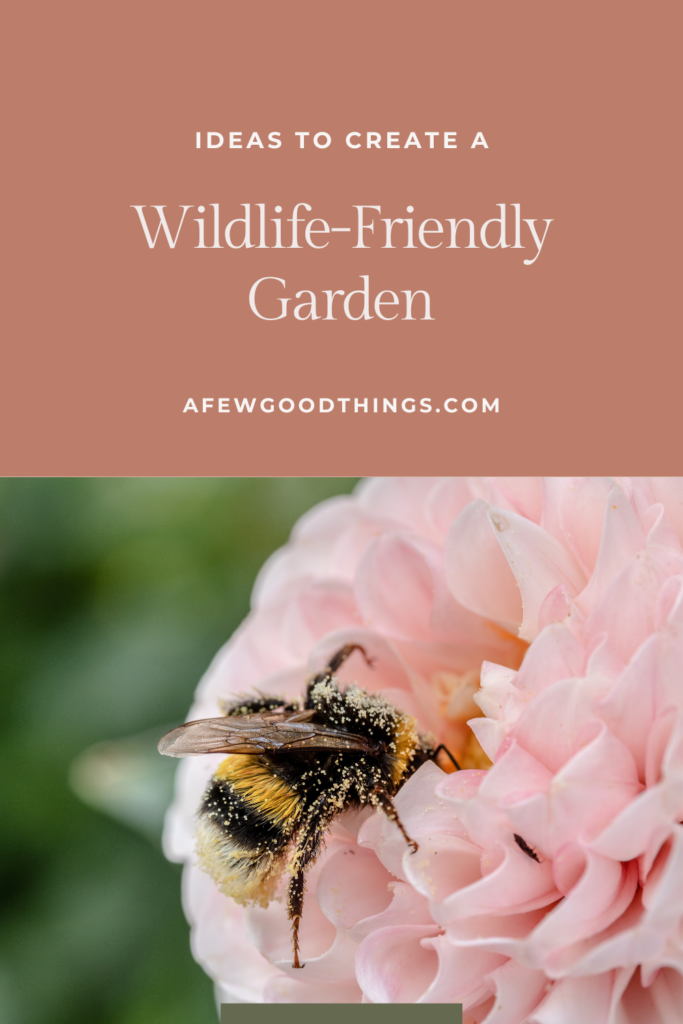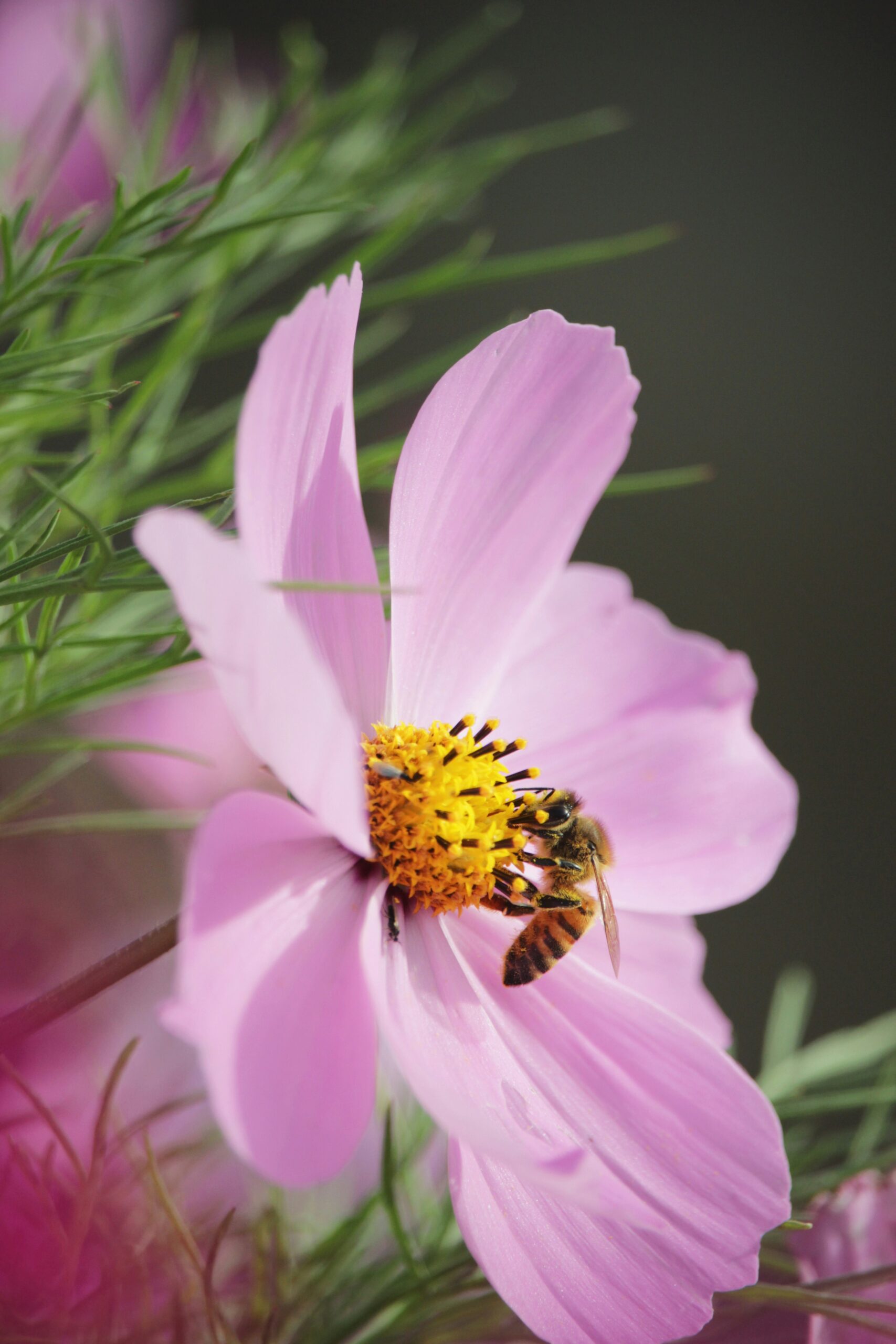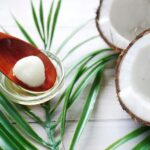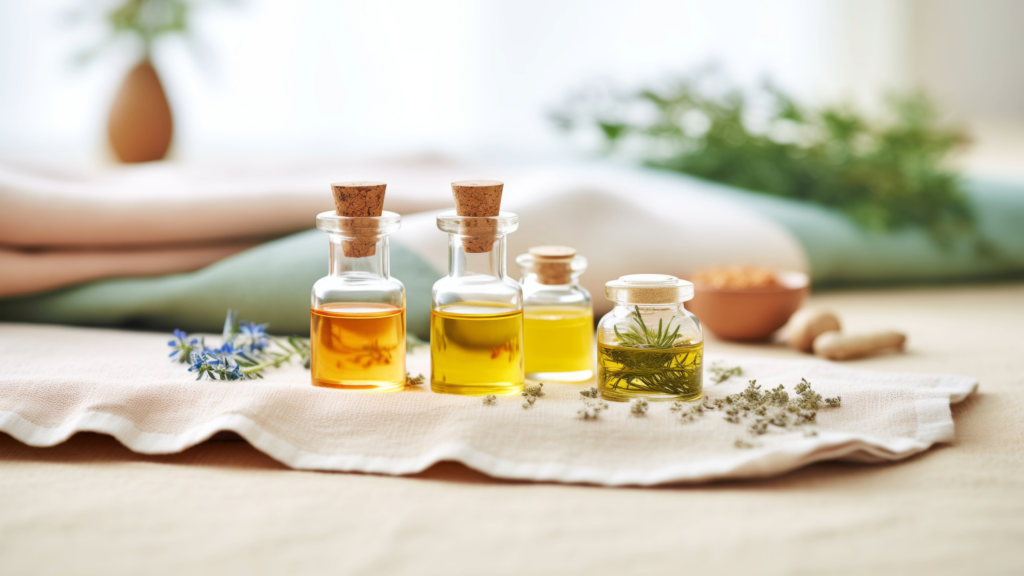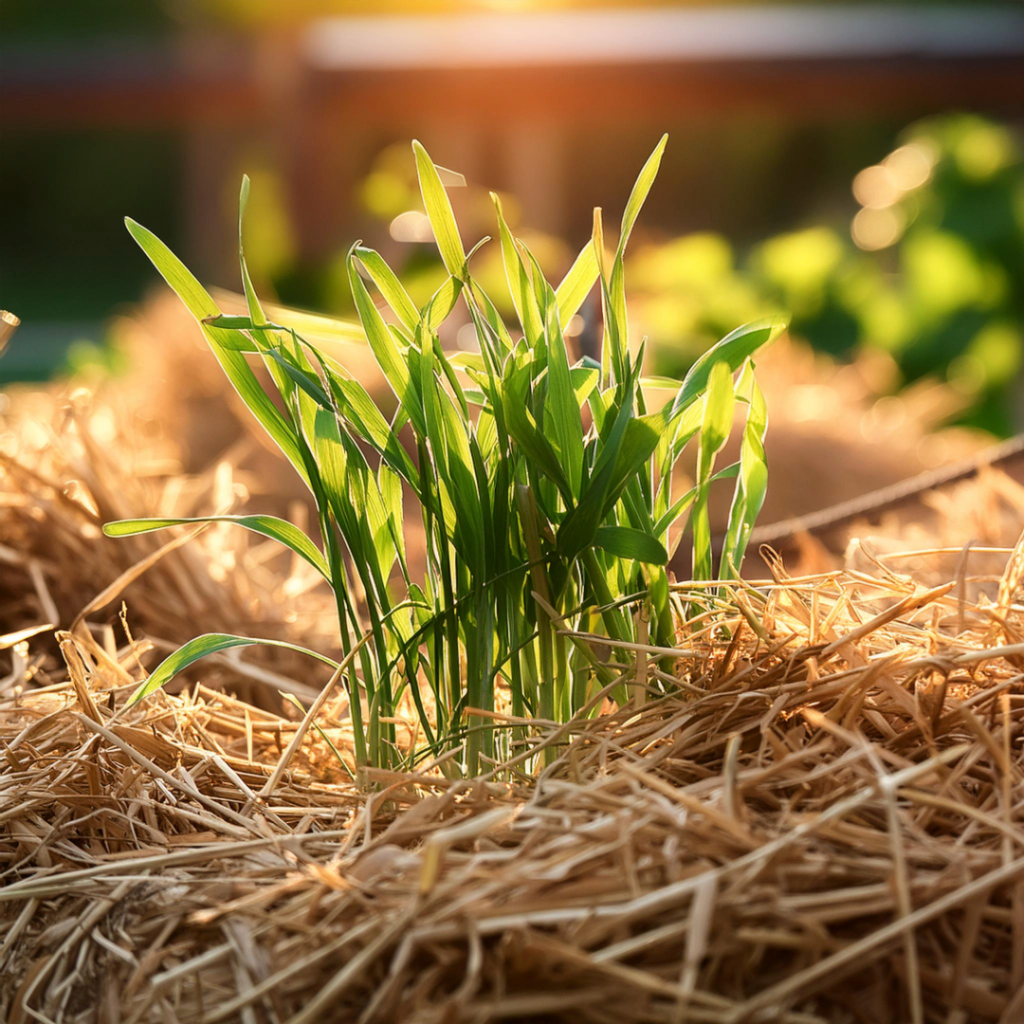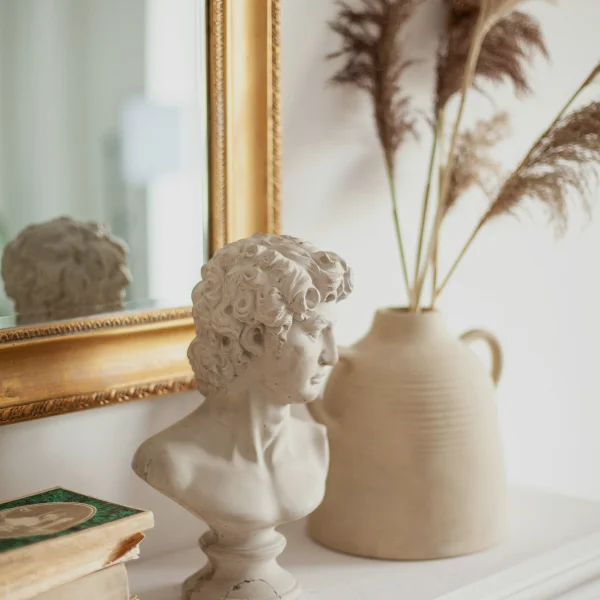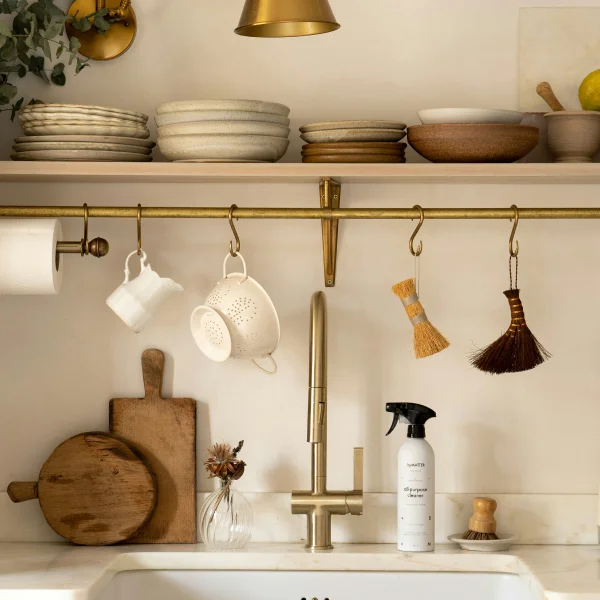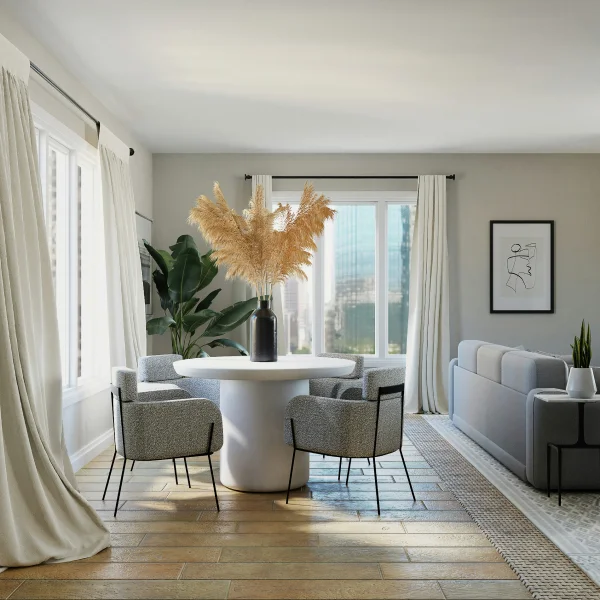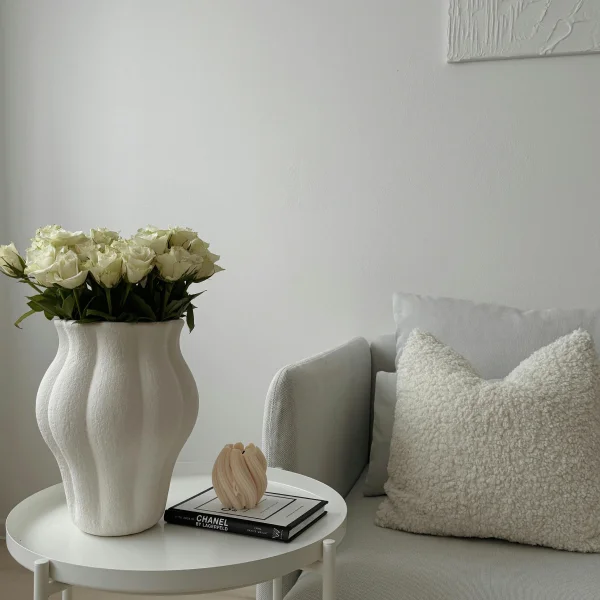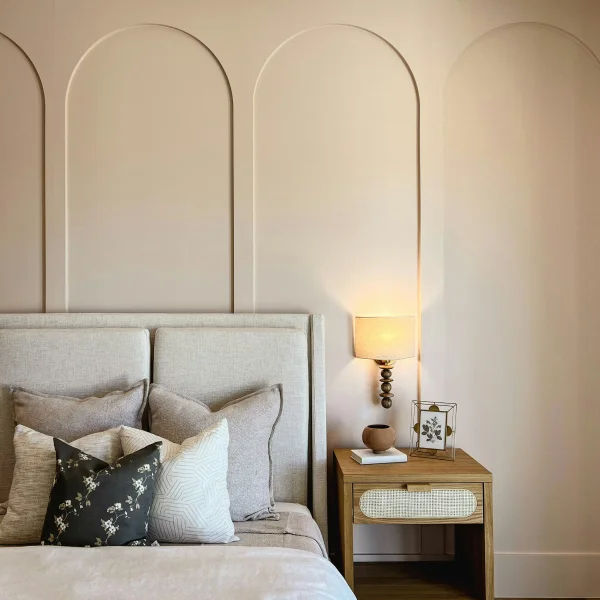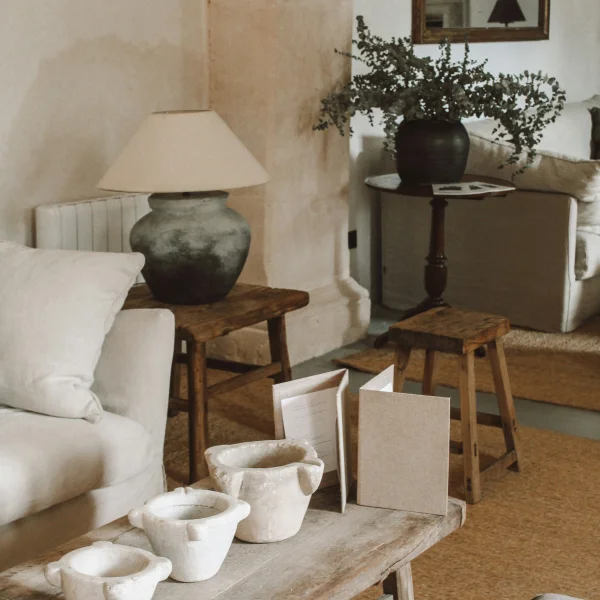If you're like me, the dangers of declining wildlife populations, especially pollinators like bees and butterflies, has come across your mind at some point or another. And judging by the fact that you're reading this, I'm going to assume it may be an issue of legit concern. So what if you could help make a …
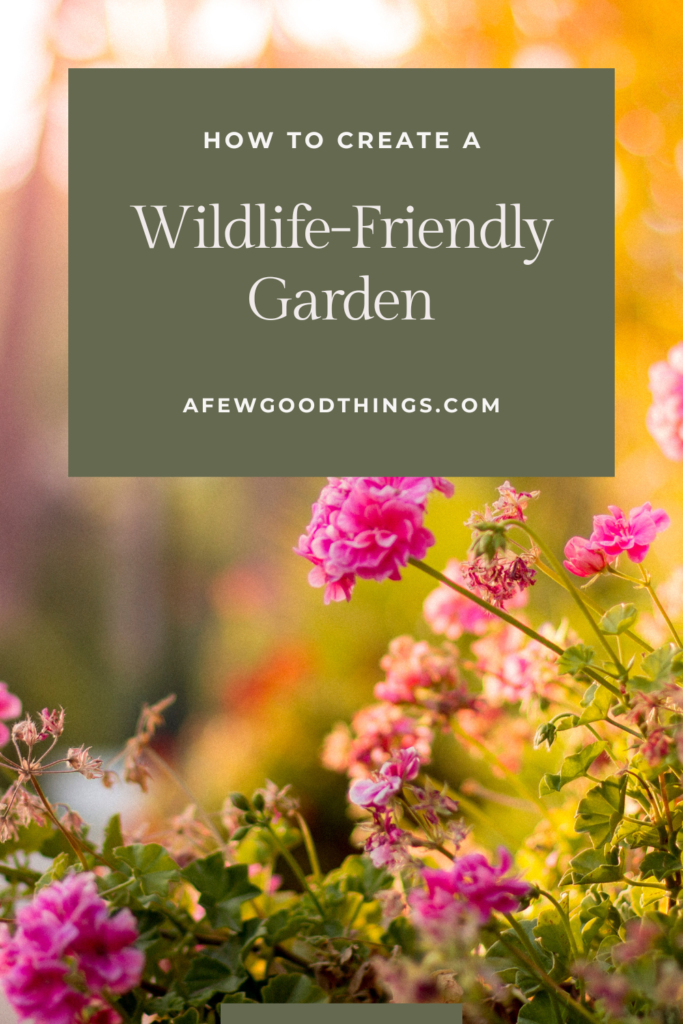
If you’re like me, the dangers of declining wildlife populations, especially pollinators like bees and butterflies, has come across your mind at some point or another. And judging by the fact that you’re reading this, I’m going to assume it may be an issue of legit concern. So what if you could help make a difference right in your own backyard? A wildlife-friendly garden isn’t just about attracting pretty creatures; it’s about creating a thriving habitat that supports biodiversity. And the best part? It’s easier than you think.
By making a few thoughtful additions to your garden, you can encourage local wildlife to visit and thrive in your garden. This means you can provide a comfortable habitat for critters and reap the benefits of having them around. Read on to see why you need wildlife in your garden.
What Is a Wildlife-Friendly Garden?
A wildlife-friendly garden is one that has been designed to attract wildlife and provide the essentials that local creatures need to survive—food, water, shelter, and a safe environment. It’s a space where birds, bees, butterflies, and beneficial insects can flourish. The beauty of these gardens is that they often balance form with function, giving you a beautiful garden while helping protect the natural world.
Key Elements
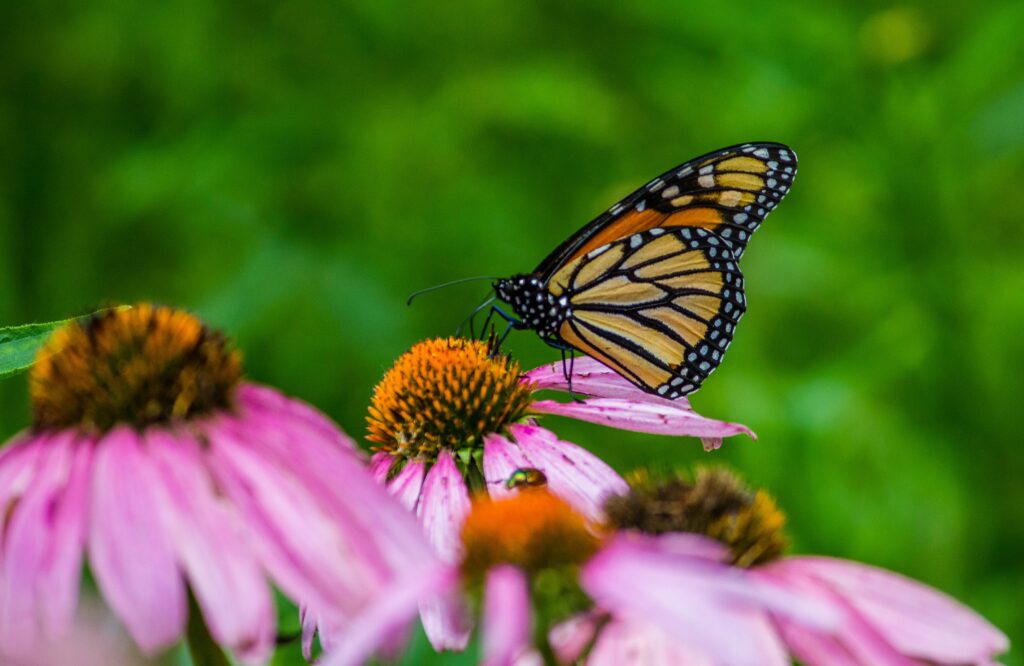
A. Native Plants
Native plants are the backbone of a wildlife-friendly garden. Unlike non-native plants, they’ve been designed uniquely for your climate and environment. They work alongside local wildlife to provide the perfect food and shelter for them. They can also be more resistant to pests, hardier and help preserve the local ecosystem.
Popular native plants for various regions include:
Midwest: Black-eyed Susan, Coneflower, Purple Milkweed
West Coast: California Poppy, Blue-eyed Grass, Lupine
Northeast: Bee Balm (which is not only beautiful but also makes a delicious medicinal tea), Wild Bergamot, Aster
If you live in the Southeast like me, I highly recommend Sow True Seed company. They have open-pollinated, Heirloom, and Organic seeds that thrive in our region!
Make sure to research plants specific to your region, as they’ll offer the best support for native wildlife.
B. Pollinator Plants
Pollinators—bees, butterflies, and even hummingbirds—are crucial for the health of many ecosystems. Planting a variety of nectar-rich flowers ensures that these beneficial insects and birds can feed throughout the seasons. But I’ll be completely honest, the health of the bees isn’t my biggest reason for planting dozens of flowers in every garden I touch.
No matter what you are growing, you will have to have pollinators at work for the crop to produce fruit (or vegetables). With the decline of bees on the planet, our gardens aren’t flourishing as much. To counter this, I plant flowers everywhere I can, especially my vegetable garden. I have 3 full rows dedicated to rambunctious cut flowers to bring in the pollinators. The gorgeous vases are an added side bonus!
Examples of pollinator-friendly plants:
Bee-friendly: Lavender, Sunflower, Goldenrod
Butterfly-friendly: Milkweed, Butterfly Bush, Zinnias
Hummingbird-friendly: Trumpet Vine, Fuchsia, Coral Honeysuckle
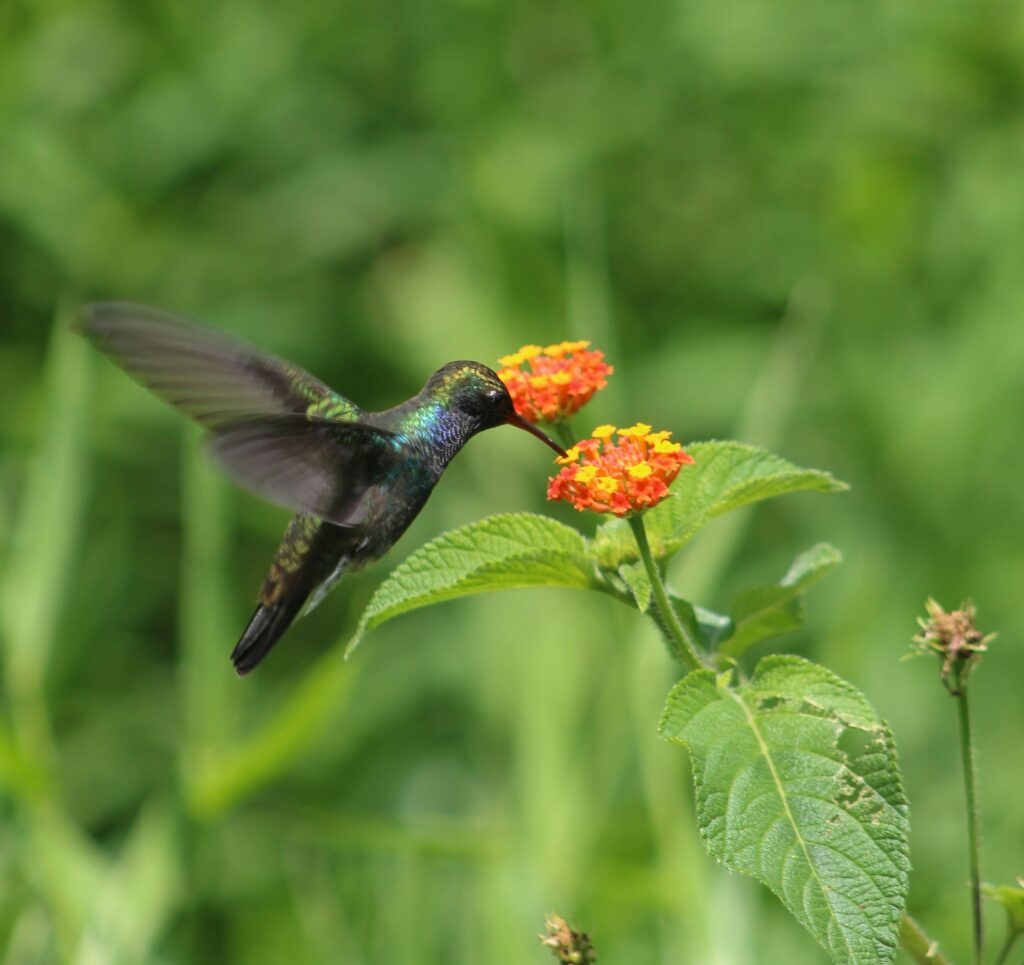
C. Water Sources
Water is essential for all wildlife, including the insects. Adding a water feature like a birdbath, a small pond, or even a shallow dish of water can provide a welcome attraction for critters. Birds will bathe, drink, and even cool off in the hot summer months, and beneficial insects like dragonflies could visit too!
I actually love the idea of providing a shallow dish with glass stones for the bees to land and refresh.
Shop this project:
Tips for a clean water source:
Change the water regularly to prevent mosquito larvae from developing.
Add a few stones or branches for birds to perch on.
If you have a pond, consider adding a small pump for circulation.
D. Shelter & Nesting Spaces
Wildlife needs places to hide, rest, and raise their young. To provide shelter, you can create layered habitats by using a combination of trees, shrubs, grasses, rocks, and logs. Let some areas of your garden remain a little wild—this “messy” space is where insects, birds, and small mammals will thrive.
We are actually seeing an increase in popularity with this “Cottage Garden” look where we use large wildflowers, grasses and trees to create beautifully layered landscapes that provide a huge amount of biodiversity.
Ideas for shelter:
Shrubs and trees for nesting birds and hiding insects.
A rock pile for reptiles and amphibians.
Logs and dead branches for beetles and other beneficial insects.
Consider adding a birdhouse or nesting box for local birds to raise their young safely.
Pro-tip: birds eat pest insects!
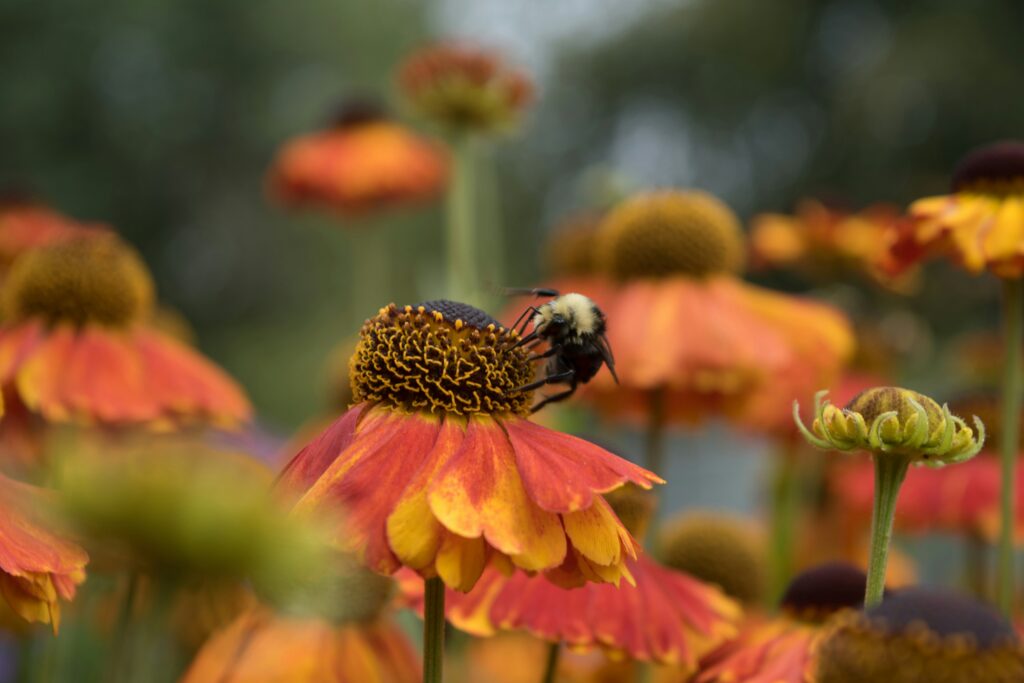
E. Avoiding Chemicals
Ok this is absolutely something you need to be mindful of. One of the most harmful things you can do to your ecosystem is use pesticides and herbicides. These chemicals are designed to kill insects and pests, but in turn harm birds, and soil organisms. Think about this. When you spray weed killer and pesticides, and then it rains, that contaminated water gets absorbed back into the soil or can end up in creeks, rivers, and your well. Instead, look for organic or natural ways to deal with pests, such as introducing beneficial insects or practicing companion planting.
Alternatives to chemical treatments:
Plant marigolds – Yes one thousand percent. I plant marigolds all around my tomatoes and vulnerable plants. While they deter deer and other insects, they also act as decoy plants for japanese beetles. So instead of the beetles destroying my tomatoes, they are living happy little lives on my marigolds without having to kill them.
Attract ladybugs, who are natural aphid predators.
Use neem oil or insecticidal soap for a safer way to combat pests.
Another alternative that is often overlooked is good ol’ fashioned hand picking. I try to go through my tomatoes once every other day the least to remove hornworms from the plants. The chickens absolutely love these juicy treats.
A few more ideas if you want to go all out:
Insect Hotels & Bee Houses: These provide a safe space for solitary bees, ladybugs, and other insects to take shelter and lay eggs. This bee hotel has great reviews.
Dead Wood & Leaf Litter: While it might look messy, leaving dead wood or leaf piles in your garden can create critical habitat for beetles, fungi, and small mammals. Dead leaves also serve as a fantastic mulch to hold moisture around your plants.
Night-Friendly Lighting: Avoid bright, intrusive lights that can disrupt the natural behavior of nocturnal wildlife. Opt for low-wattage, motion-activated lighting instead.

Common Mistakes that could be harming your wildlife:
Over-manicuring your garden: While neatness can be pleasing, removing all leaf litter, dead stems, and fallen branches deprives wildlife of food and shelter.
Introducing invasive species: Some non-native plants can crowd out local plants and disrupt the ecosystem. Stick with native varieties to avoid this problem or plant invasives, like mint, in pots.
Large lawns: Lawns are often the least beneficial for wildlife. Consider reclaiming part of your lawn with a wildflower meadow, native grasses, or vegetable beds.
Starting Small: Easy Projects for Beginners
If you’re anything like me, you want the Taj Mahol of gardens right in the beginning, but it can be very overwhelming if you start to big, especially when it comes to switching out chemicals for other techniques. It’s ok to start small and make adjustments over time. Try these ideas.
Build a Bee Bath: Simply fill a shallow dish with water and add some pebbles so bees can land and drink safely.
Plant a Pollinator Patch: Dedicate a small area of your garden to flowering plants that attract pollinators.
Install a Bird Feeder or Nesting Box: These are simple additions that can attract wildlife quickly.
Even small changes will help create a welcoming environment for local wildlife.
Conclusion
Creating a wildlife-friendly garden is more than just an aesthetic choice; it’s a way to make a lasting impact on the local ecosystem. By planting native species, adding water sources, creating shelter, and avoiding harmful chemicals, you can support biodiversity right in your own backyard and your plants will reap the benefits. Every garden, no matter how small, plays a part in helping wildlife thrive.
So, why not start today? Whether it’s planting a few wildflowers, setting up a birdbath, or building an insect hotel, every step counts. And who knows—your garden could become the next local wildlife hotspot.
Have you created a wildlife-friendly garden? Please share your ideas, or experiences in the comments below! I’m building a house and am here for the inspiration!
